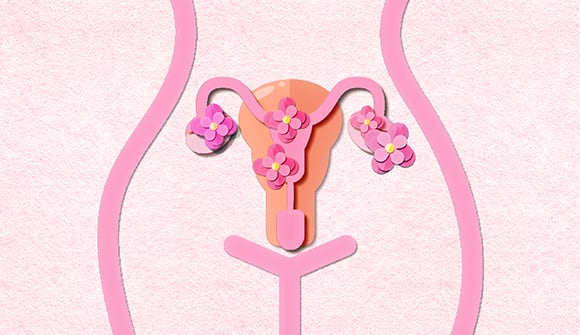Drop and give me 10
Kegels, that is. Why every woman should exercise her pelvic floor daily.
Article Author: Katie McPherson
Article Date:

Leg day, biceps, triceps, core — when you think about exercising your body’s major muscle groups, these all come to mind first. But just as important is working out the pelvic floor. Not only does it support a number of important internal organs inside the body, but it’s also a key part of pregnancy, delivery, and a woman’s continence as she ages.
“Pelvic floor muscles are the muscles that control the flow of the urine and bowel movements. When they are not strong enough, patients may experience incontinence, like stress incontinence, which occurs with coughing or sneezing, or urge incontinence. This comes with menopause, multiple childbirths, or connective tissue disease that can make the pelvic floor weak,” said gynecologist Paulami Guha, MD, women’s health specialist and surgeon at Baptist Health and North Florida Gynecology Specialists, LLC.
She said Kegels are just like any other exercise people do to tone a major muscle group, like lifting weights. Gynecologist Maryellen Wechter, MD, women’s health specialist and surgeon at Baptist Health and North Florida Gynecology Specialists, LLC, said Kegels have another little-known benefit.
“Sometimes, the problem with the pelvic floor isn’t so much that it’s weak, but that it’s asymmetrically weak spasming in some part of the muscle. That can cause pain. We find in gynecology that pelvic floor therapy, and Kegels, if done correctly, can help treat pelvic pain,” she said.
She also shares with her patients one easy technique to figure out if they’re doing Kegels correctly.
“Sit on the toilet and stop your urine — those are the muscles,” said Dr. Wechter. “That squeeze you do is the group of muscles you’re trying to use during a Kegel exercise. I remind patients that these muscles are hard to control, so it takes a little bit of work to strengthen the mind-muscle connection, and concentration to not squeeze the belly or buttocks during that time.”
Put Kegels on your to-do list
The best way to remember to do Kegels each day is to associate them with a daily activity, like sitting on the couch to watch TV or read in the evenings.
“You don’t need a special place to do Kegels,” said Dr. Guha. “They can be done even when you are sitting at the computer working or watching TV. We recommend doing them at least three times a day, 10 each time. You have to hold each one for at least five seconds.”
In fact, your pelvic floor can take all the Kegels you’re willing to do. Dr. Guha and Dr. Wechter agree that the pelvic floor can’t get too strong, but recommend consulting with your gynecologist if Kegels cause any muscle spasms. That could be a sign of improper Kegel-ing or other issues that result in too much muscle tone.
They also say keeping up with Kegels isn’t something they recommend only to women experiencing incontinence.
“Doing Kegel exercises isn’t just something to do when there’s a problem, but something to do to help maintain those muscles for support of the organs and pleasure during intercourse,” said Dr. Wechter. “We like to see women do these throughout their lives. Once we see people with a problem, then you’re working from the negative into the positive.”
Men can do Kegels, too
A recent study from the University of the West in the United Kingdom even found that Kegel exercises helped 40% of men with erectile dysfunction (ED) regain normal function. While it may not be the only treatment men need, Kegels probably can’t hurt.
“The pelvic floor is very similar between men and women, so there’s probably no drawback to doing Kegels for men,” said Dr. Wechter. “As for how they help with ED, it’s hard to find any good literature. For men to practice Kegels correctly, we would say squeeze the muscles you use when you try not to pass gas.”
Dr. Guha adds that one of the most common risk factors for ED is the medications a man may be taking, and he doesn’t have the major risk factors for pelvic floor weakness, like childbirth.
How long does it take for Kegels to work?
Women who have incontinence due to a weak pelvic floor and begin doing Kegels can expect to feel results in three to six months. Women with other reasons for incontinence, like a tumor or blockage, may require additional treatments and a little more time.
If there is no change, it may be time to get some expert guidance. Baptist Health’s Total Control program is an evidence-based exercise program designed to strengthen the core and pelvic floor to help alleviate incontinence.
“In some patients, the reason for pelvic pain is spasm of the muscles, similar to how a stress headache or jaw tightness can cause pain. Reverse Kegels, learned with a physical therapist, can help relax those muscles,” Dr. Guha explained. “After childbirth, even if you’re not older, a woman will leak here and there and we tell them to wear a pad and do their Kegels.”
If you are experiencing incontinence or pelvic floor issues, visit 4Her or call 904-202-4HER (4437) to find the right provider for you and make an appointment.



